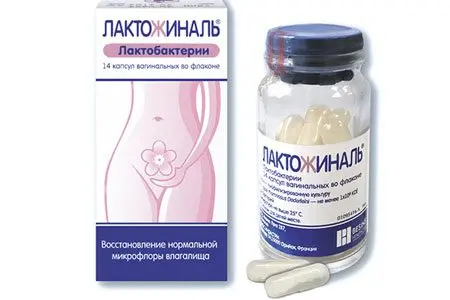Contents

Vaginal dysbacteriosis is a non-inflammatory infectious lesion of the vagina in which its normal flora is replaced by associations of anaerobic bacteria.
This pathology is widespread and is detected in 21-33% of women who come to see a gynecologist. Depending on the severity of dysbacteriosis, its symptoms can be bright or hidden. The disease often has a long relapsing character, does not apply to sexually transmitted infections.
In the vaginal lumen, the growth and development of bacterial and fungal flora always occurs. However, this process does not pose any threat to the woman’s health, since it is controlled by the hormonal background, the immune system, and the available beneficial microflora. In the vast majority, lactobacilli (Doderlein sticks) are present in the vagina. Their share is about 95%. They create an acidic environment around themselves, thereby preventing other microorganisms from multiplying there.
In the event of a failure in the control mechanisms, a persistent change in the vaginal mucus occurs, the Doderlein sticks die, or their number decreases and favorable conditions are created for the growth and development of the pathogenic flora. This, in a simplified version, is the mechanism for the development of vaginal dysbacteriosis.
Causes of vaginal dysbacteriosis
The cause of vaginal dysbacteriosis never becomes any one microorganism. The development of the inflammatory process occurs as a result of the influence of the association of microbes. Most often, such pathogenic agents are gardnerella, mycoplasma, mobilincus. They are called anaerobic bacteria because they do not need oxygen to grow and develop.
The causes of vaginal dysbacteriosis, in which uncontrolled growth of pathogenic flora occurs, can be as follows:
Internal causes of vaginal dysbacteriosis:
The period of menopause. At this time, there is less growth and reproduction of lactic acid bacteria, as the amount of estrogen produced in the body of a woman decreases.
Childbearing period. In this case, the growth of lactic acid bacteria decreases under the influence of an increased volume of progesterone. In addition, the natural process of reducing the immune defense of a woman is launched so that the fetus is not rejected.
Bacterial vaginosis can be the result of an abortion, or hormonal stress on the body, such as a miscarriage.
Atrophic processes in the vaginal mucosa also contribute to the violation of its microflora. This pathology is called vulvar kraurosis.
Intestinal dysbacteriosis. In case of violation of the intestinal microflora, the microflora of the vagina changes.
Hormonal disorders.
The presence of a polyp or cyst of the vagina.
Congenital malformations of the reproductive system.
Endocrine diseases.
External causes of vaginal dysbacteriosis:
Uncontrolled, unreasonably long, or self-administration of antibacterial drugs. It is known that antibiotics do not have selective properties and have a detrimental effect on all bacteria in the body.
Treatment with drugs from the group of cytostatics, antimycotics, or undergoing radiation therapy. Pathology in this case develops due to a decrease in immune defense.
Violation of the rules of intimate hygiene, or neglect of them.
Excessive hygiene, in particular douching, excessive use of soap.
Postpartum or surgical deformities of the cervix, vagina, or pelvic floor muscles.
Foreign bodies in the vagina.
Use of sanitary tampons, insertion of a diaphragm, cervical cap or intrauterine device.
Use of spermicides.
Change of permanent sexual partner.
Maintaining an active sex life.
The presence of an inflammatory process in the reproductive system.
Separately, it is worth noting such a reason for the development of vaginal dysbacteriosis as disorders in the immune system. A decrease in the body’s natural defenses can occur for a huge number of reasons, these are: any infections, any non-communicable diseases, the impact of endogenous and exogenous factors. Therefore, any impact that negatively affects the immune system can become a trigger in the development of the disease.
Symptoms of vaginal dysbiosis

Symptoms of vaginal dysbiosis can vary greatly.
Most often, women note the following signs that may indicate the presence of a pathological process:
Discharge from the genital tract, which can be either copious or scanty. Often they have an unpleasant odor that becomes stronger after intimacy, as well as during the next menstruation. The smell of ammonia, or the smell of rotten fish, arises from the vagina due to the active life of opportunistic flora, in particular, gardnerella. If the process of vaginal dysbacteriosis is at an early stage of development, then the discharge will be liquid, scanty, with a grayish tint.
Itching. This is a non-permanent symptom that may be absent. However, most women report increased itching during menstruation.
Pain during intimacy.
Against the background of purulent discharge, adhesion of the labia minora is possible.
The occurrence of a burning sensation after and during the process of urination.
When a pathological process exists in a woman for a long period of time, the symptoms become more pronounced:
Whites begin to change their consistency. They become more viscous, similar in composition to the curd mass.
The color of the discharge changes and acquires a dark green tint.
Allocations are evenly distributed along the walls of the vagina, become sticky and viscous.
The amount of secretions increases, up to 20 ml can be collected per day at a rate of 2-4 ml
The risk of developing vaginitis increases, as pathogenic flora joins the opportunistic flora.
There is mild itching around the vulva.
Possible violation of the process of urination. It becomes more frequent and more painful.
In this case, visible signs of the inflammatory process may not be observed. The mucous membrane of the vagina is not changed, has a pink uniform color. Colposcopy also does not give positive results.
In some women, the symptoms of vaginal dysbacteriosis persist for a long period of time, and some women feel any changes only periodically, under the influence of adverse factors.
Diagnosis of vaginal dysbacteriosis
Diagnosis of vaginal dysbacteriosis is within the competence of a gynecologist. He collects the patient’s history, finds out her complaints. During the examination, the doctor visualizes homogeneous discharge on the walls of the vagina. They may be whitish or grayish in color. Sometimes an unpleasant fishy odor comes from the vagina.
It is obligatory to take a smear from the vagina. It allows visualization of desquamated epithelial cells to which pathogenic bacteria (key cells) are attached. Normally, these cells should not be. In addition, with vaginal dysbacteriosis, epithelial cells will prevail over leukocytes, and the number of Dederlein sticks will be reduced.
Additionally, the acidity of the vaginal environment is determined. This is done using a special test strip. Dysbacteriosis is indicated by an increase in the acidity of the medium to 4,5 and above.
Another diagnostic sign indicating dysbacteriosis is the appearance of the smell of rotten fish when potassium alkali is added to the vaginal leucorrhoea.
A doctor can make a diagnosis if a woman has three of the four positive diagnostic criteria:
The presence of key cells in the smear;
The smell of stale fish when performing a reaction using bleach;
Acidity more than 4,5;
Visualization of specific whites during examination.
If there are indications, then the woman is referred for a consultation with other specialists, such as: an endocrinologist, a venereologist, a gastroenterologist, etc.
Treatment of vaginal dysbacteriosis

Therapy begins immediately after the diagnosis is made. The success of treatment directly depends on the competent selection of drugs.
Treatment of vaginal dysbacteriosis is carried out in two stages:
First you need to achieve normalization of conditions for the reproduction of lactobacilli in the vagina. To do this, it is necessary to stimulate both local and general immunity, put the hormonal background in order, rid the vaginal mucosa of the abundance of pathogenic flora.
The second stage is the direct restoration of normal flora. If the healthy balance of microflora is disturbed, various diseases can develop: vaginitis, colpitis, vaginosis, the so-called “thrush”, caused by the growth of conditionally pathogenic flora. Usually, in such situations, an antimicrobial agent is prescribed (depending on the causative agent of the infection), as well as a remedy for restoring healthy microflora in parallel with the first stage of treatment. If the lactoflora is not quickly restored, re-activation of harmful microorganisms and the return of symptoms are possible.

To restore the balance of beneficial microflora, lactoginal vaginal capsules may be prescribed. This is a French drug for the restoration of intimate microflora with enhanced LCR lactobacilli. The use of Lactoginal capsules helps to restore the pH level, a healthy vaginal microbiome.
Two-stage therapy has become the gold standard for the treatment of vaginal dysbacteriosis, including those accompanied by pathological discharge. Many experts are confident that the two-stage method using Lactoginal capsules provides a pronounced and long-term therapeutic effect, strengthens local immunity, and prevents the growth of pathogenic microflora. Lactoginal should be used within 21 days after the end of the basic course of treatment for thrush.
To achieve these goals, it will be necessary to normalize the acidity of the vaginal environment, to eliminate pathogenic agents. Treatment of a sexual partner does not make sense, since vaginal dysbacteriosis is not sexually transmitted.
So, for the treatment of vaginal dysbacteriosis, a woman is given the following medical recommendations:
The use of tablets and suppositories. Most often, doctors prescribe a drug such as Trichopolum with the active substance – metronidazole. This drug allows you to eliminate anaerobic bacteria. The drugs of choice are also: Ornidazole, Tinidazole, Clindamycin. The duration of treatment should not exceed 10 days.
Patients should be informed about possible side effects when taking drugs orally. They can be reduced if the funds are used topically. It is possible to prescribe such vaginal suppositories as: Flagyl, Neo-Penotran, Klion-D, Trichopolum, Clindacin. Doctors also prescribe the installation of tampons with creams or gels applied to them: Dalacin, Rozamet, Metrogyl-gel, Rozeks.
Vitamin therapy. During treatment with antibacterial suppositories, a woman is shown taking vitamin C in an increased dosage. This contributes to the activation of immune forces, improves the healing rate of damaged mucosa, and reduces vascular permeability.
Performing vaginal insertions. For 7 days, once a day, it will be necessary to place tampons moistened with 2% concentration of lactic or boric acid in the vagina. This will create an acidic environment that will be unfavorable for the growth of anaerobic bacteria.
Antiallergic drugs. Often, in addition to general treatment, doctors prescribe antihistamines such as: Cetrin, Suprastin, Tavegil.
Restoration of normal vaginal flora. The final point in the treatment of vaginal dysbacteriosis is the intervaginal administration of biological products. For this purpose, candles are used: Bifikol, Bifidumbacterin, Atsilakt, Laktozhinal. The course of treatment, as a rule, is no more than 10 days.
With a competent approach to the treatment of vaginal dysbacteriosis, the normal microflora is restored, followed by the absence of relapses of the disease.









